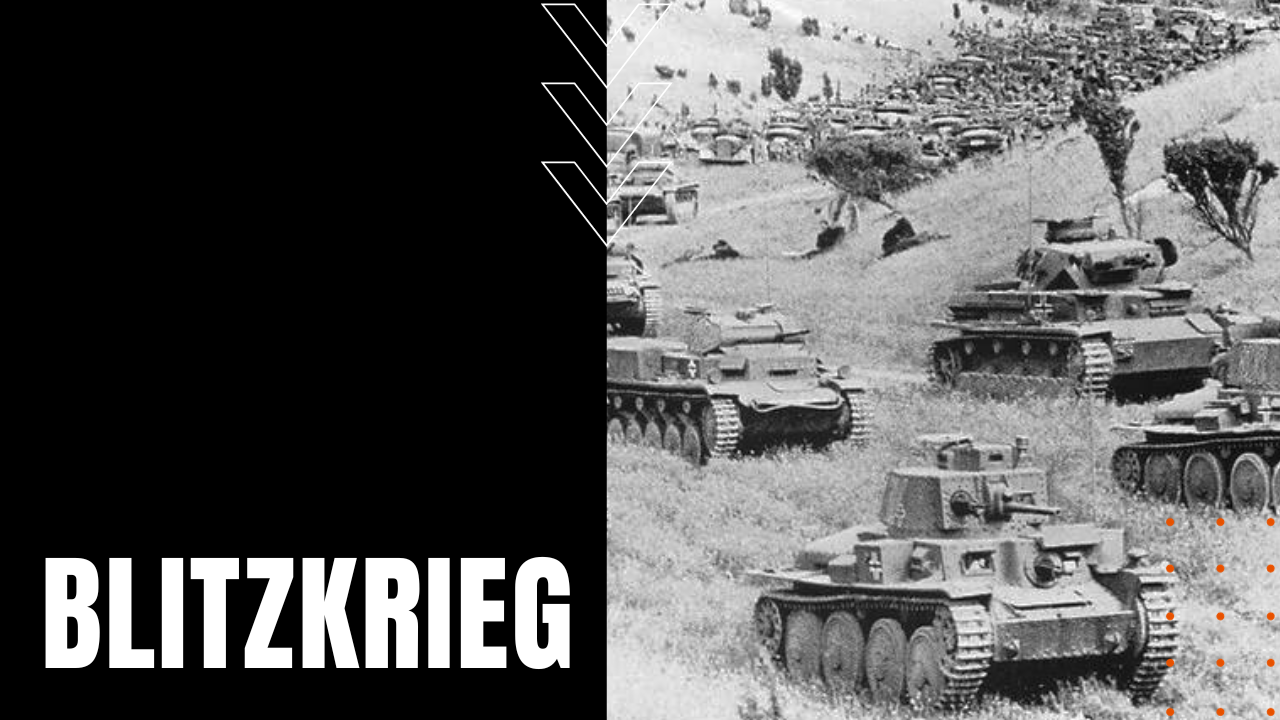Blitzkrieg

The genesis for the Nazi’s Blitzkrieg or Lightning War tactic was first proposed by 19th century Prussian general Carl von Clausewitz, when he outlined his “concentration principle” for breaking through enemy lines. Germany’s Blitzkrieg strategy was further developed after the arduous deadlock of trench warfare during the First World War, and while the postwar Treaty of Versailles limited the German army to 100,000 men or ten divisions (compared to France’s 85 divisions at the start of World War Two), Germany honed their Blitzkrieg invasion technique during their participation in the Spanish Civil War of 1936 to 1939, employing cardboard versions of Panzer tanks to practice Blitzkrieg tactics, without violating the limitation required by the Treaty of Versailles.
To Win by Not Fighting
According to John Delaney, head of the Second World War team at the Imperial War Museum, “The main goal of Blitzkrieg was to win by not fighting,” but to defeat an enemy by dislocation, rather than the uncertainty of defeat on the battlefield. To accomplish this, Nazi stormtroopers first identified weak points in the enemy’s line, before breaking through to cause disruptions in an opposing army’s rear flank, allowing inferior numbers of German forces to rapidly defeat their chosen foe. Of the three prerequisites of a successful Blitzkrieg, speed of forward movement was paramount, and while only 15% of the German army was mechanized, by concentrating these assets at the tip of the spear, the Nazis combined close air support by the Luftwaffe, speed of communication and rapid decision-making to punch through enemy lines against superior opposing numbers.
Antiquated Tactics
Decisions made on the battlefield in minutes by German commanders proved vastly superior against antiquated Allied decision-making chains of command that generally took days to reach the field of battle, and while the Allies were tactically prepared for a repeat of the First World War, the Germans use of radio communications proved overwhelmingly superior to the Allies use of phone lines for strategic communication—something that could easily be cut in minutes—allowing German forces to capture in weeks what they had failed to take during the entirety of WW1. With Nazi troops in Paris by June of 1940, the French had signed their opprobrious surrender by the end of the month, ironically in the same railway car Germany had used for their surrender in 1918. Later in the conflict, Germany’s Blitzkrieg strategy would prove insufficient against the Allies’ war of attrition that simply out-produced her enemies in military might, making Hitler’s Blitzkrieg strategy of shock and awe, a key early tactic in his aggression against the world.
